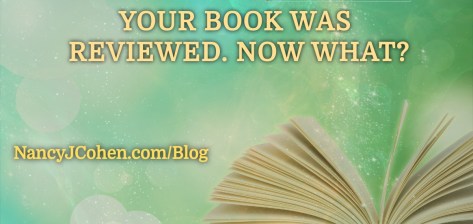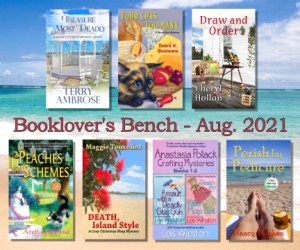Reviews are an author’s lifeblood. At best, they can strongly influence new readers to buy your book. At worst, a slew of poor reviews or low numbers may lead your publisher to think twice about accepting your option book. The quantity and ratings also affect your promotional opportunities since some ads require at least 10 reviews with a 4.0 or higher average. For a writer, getting reviews is paramount.
When a reader goes to an online bookstore site to scout out a potential new read, she’ll read the story blurb, look inside for a taste of your writing, and then read the customer reviews. Editors and agents may also look at reviews of your prior titles when considering which author to take on. Like with any business, we want to make a good impression.
This discussion does not involve how to get reviews. We’re going to talk about what you can do with a review once you receive one.
Here are some steps to take:
Create a subfolder labeled Reviews under your book title in your word processing program.
Copy and paste the entire review to a blank page and name the file. Put it in the Reviews folder.
Add the reviewer’s social media links.
Pull out several quotes. Add these quotes to your page of Tweets for this book title.
Add the review to your website’s book page.
Make a meme with a quote and for a featured book review. Examples:
Share the review on your social media sites. Tag the reviewer.
Leave a comment on the reviewer’s site thanking her for the review.
“Like” reviews for your book on Goodreads and BookBub.
Add it to the editorial reviews on Amazon if the reviewer didn’t post there.
If you are self-published, add the quotes elsewhere, such as IngramSpark and Barnes and Noble through their publishing platforms.
If you are trad published, copy the review to your editor.
Make a meme including several advance quotes for a new release
Keep a personal list or spreadsheet with each reviewer’s name, contact info, social media sites, and links to your reviews. This will give you a head start for your next release. Don’t forget to add how they’ve acquired your book (i.e. you sent them a file/link or they got it on NetGalley) and the dates for all correspondence.
Send out a reminder letter after the book goes live with buy links to reviewers who have downloaded the book but have not yet posted a review.
Send thank you notes to reviewers who have followed through.
Your Book Was Reviewed - Now What? #BookPromotion Click To TweetKeeping meticulous records will show you who to approach for your next release. You’ll know who responded and who didn’t and where they posted reviews. This list will be fluid, changing for each book. Just remember to always be courteous, thank the reviewers for their time, and share their posts on your social media sites to show your appreciation.
GIVEAWAY
Enter Here to win a free book from Booklover’s Bench




















